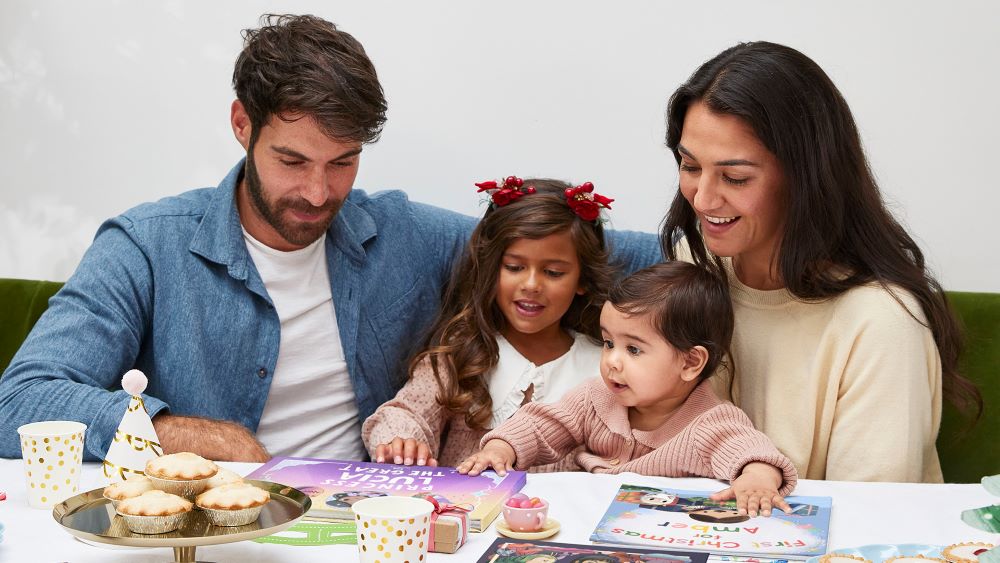According to parents, the top 20 reasons why children aren’t represented well in books include ethnicity and gender
Research of 1,000 children aged six to 12 and their parents revealed eight in 10 read regularly and feel characters always look the same, and don’t represent different views.
And of the 37 per cent of girls who don’t feel represented, 38 per cent thought lead roles in stories always seemed to be boys.
A majority (27%) of parents agreed with the lack of representation for their children. However, this is despite the fact that a child who is an only child has allergies and is often covered by glasses.
41% also thought their child would be more inclined read more often if they were familiar with the main characters.
Common themes are seldom covered, including divorcing parents and mental health conditions.
Asi Sharabi is the CEO and co-founder at personalised book brand Wonderbly, which commissioned the research, said: “Children want nothing more than to feel a part of a story and the research has highlighted while some are able to, for varying reasons, others are not.
“It’s vital in engaging a child for them to feel like they can relate to either the story or the characters involved.
“The research also found that parents are quite aware of this too when it comes to finding content they consume as they strive to find things like books that are more representative of their children.”
Other characteristics children haven’t seen in their books, according to their parents, include physical disabilities, different locations kids can live such as in the city or the country, and skin conditions.
Being short or tall, having parents who have divorced and mental health conditions are also not covered.
Parents answered the question, “What are the most represented main character traits?” and they identified transgender, being physically disabled, and having alopecia in the unrecognized areas.
And 61 per cent believed it’s important for kids to see themselves represented in the wider content they consume including films and TV as well as books.
Nearly 49% of 10 children (39%), would like to see more people similar to them in movies, 37% in TV shows, and a third at school.
46 percent of children have never seen a character that they can relate to on TV, while a third of them have asked their parents for books with more characters who speak, look, or act like them.
Representation is essential for child development
Parents believe representation is important in such mediums to help normalise their feelings and help them relate to stories.
And 36 per cent don’t want them to feel like they’re different, according to the OnePoll data.
Nearly half of respondents (48%) believe that reading about characters like them in books can make them feel confident and capable of accomplishing anything.
Though, 38 per cent admit it’s difficult to find books that do represent their young, with 37 per cent reckoning it has put them off reading altogether.
Asi Sharabi from Wonderbly, a service where you can personalise book characters including their skin tones and hairstyles, added: “It’s so important for children to feel represented in the books they read.
“When children see themselves as the hero of a story, it helps them believe that they can do anything they can imagine; that any story they imagine could be their story.
“Books are also a way to educate your child on an infinite number of topics and themes that shape how they view the world.
“Personalisation helps children relate to the storylines and makes them far more receptive to the key messages and learnings of each tale.
“We want as many children as possible to see themselves in their own story.”
Parents reveal the top 20 ways that children aren’t represented by books.
- Transgender
- A physical disability (e.g. A physical disability, e.g. being in a wheelchair, not having certain legs, being blind, etc.
- Alopecia
- Conditions of the skin
- Female or non-binary/alternative gender identity
- Having the same sex parents
- Losing a parent
- Dyslexia
- Being significantly shorter than or greater than the average height for their age
- Non-heterosexual sexuality
- Religious beliefs
- Living in a flat
- Minority race
- Divorced parents
- Allergies
- Wearing glasses
- Not having a brother/sister
- Non-native nationality
- Braces placed on your teeth
- Uncommon hair colour e.g. red hair
[Denial of responsibility! newsanyway.com is an automatic aggregator of the all world’s media. In each content, the hyperlink to the primary source is specified. All trademarks belong to their rightful owners, all materials to their authors. If you are the owner of the content and do not want us to publish your materials, please contact us by email – at newsanyway.com The content will be deleted within 24 hours.]
